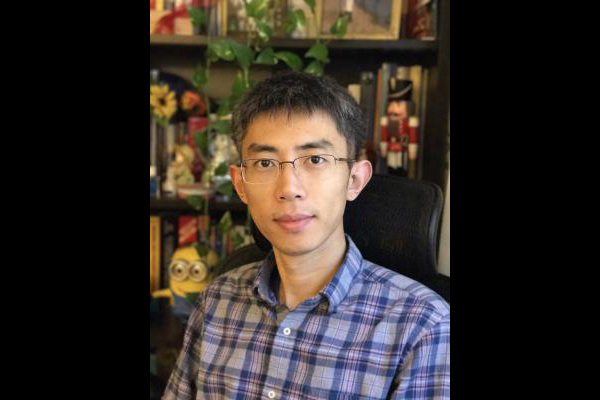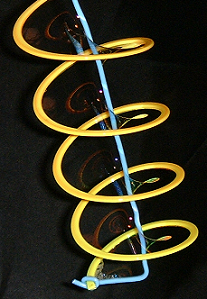
A Large Talk on Minimal Surfaces
Every four years, mathematicians from around the world convene for the International Conference of Mathematics. Hosted by the International Mathematical Union, the conference is the largest of its type. Prestigious honors like the Fields Medals, Nevanlinna Prize, Gauss Prize and Chern Medal are awarded during the opening ceremony.
Associate Professor Xin Zhou, a geometer at UC Santa Barbara, is among the researchers who has been invited to speak at the union’s 2022 event in St. Petersburg, Russia.
“Being invited to speak at the ICM can be a source of pride for the rest of your career,” said math department chair Stephen Bigelow. "We are happy and proud that Xin has achieved this great recognition.”
Zhou will speak about minimal surfaces, surfaces of constant mean curvature and the relationships between the two. He plans to focus especially on how the two are connected by his proof of the Multiplicity One Conjecture.
Minimal surfaces are those that satisfy certain equations while maintaining the minimum possible area under local perturbations. These surfaces are mathematical models for soap films and soap bubbles, as the liquid’s surface tension produces shapes with the least surface area possible under the constraints of the enclosed volume. Minimal surfaces are fascinating phenomena in their own right and also have applications in materials science and general relativity.
“Since these equations appear naturally in science, mathematicians are interested in solving them,” Zhou explained. However, unlike a line, parabola or many other familiar shapes, there isn’t any explicit formula that describes these surfaces. They have to be derived implicitly in a more abstract manner.

A soap film forms a minimal surface spanning a helical frame.
Photo Credit: BLINKING SPIRIT VIA WIKIMEDIA
In the 1930s, mathematicians discovered solutions for surfaces with a simple closed boundary where curvature was zero. These local solutions worked for flat and curled sheets with borders, like a soap film spanning a wire bubble ring. By the ‘80s, researchers had proven the existence of at least one closed solution, or a minimal surface without a boundary.
Zhou sought to generalize this theory to produce closed surfaces with constant mean curvature, like soap bubbles. This is much more difficult because there are fewer constraints on the solutions. And in mathematics, more freedoms often lead to more headaches.
Mathematicians met with success after many years of work, finding a strategy to prove the existence of infinite may solutions to this equation. Yet they encountered an issue. Many seemingly distinct solutions were simply multiple copies of a previous solution. This was akin to claiming that, say, the film “Forrest Gump” watched back to back is a different movie than watched a single time.
In recent years, two of Zhou’s colleagues formulated a hypothesis: the Multiplicity One Conjecture. It proposed that there was a way to produce solutions to the equation that always included only one copy of the minimal surface. In January 2019, Zhou finally produced a proof, describing a method that could generate these genuine solutions. The following month, he received a fellowship from the Alfred P. Sloan Foundation in recognition of his promising early-career achievements. He added this to his NSF Career Award.
“I think people like my work not only because I solved the conjecture, but because it was not an isolated discovery,” Zhou said. “The solution forms a series with my work on minimal surfaces of constant positive curvature.”
Zhou appreciates all the support he’s received at UC Santa Barbara. “Most of my important research was conducted as an assistant professor in the Department of Mathematics at UCSB,” he said. “I would like to express my gratitude to my colleagues, especially Professor Guofang Wei, for their support.”
Zhou is excited to showcase his accomplishments mostly as a way of encouraging younger mathematicians. “I want to inspire some of the students in the department,” he said. He wants to show them that work done at UC Santa Barbara garners attention from others in the community. “If I were a student, seeing the success of someone in the department would make me excited and more motivated to dive into work in my own field.”
The 2022 International Conference of Mathematics will be held in July 2022.



